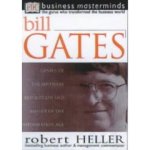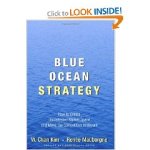 Why Iceland?: How One of the World’s Smallest Countries became the Meltdown’s Biggest Casualty (2009) is a book by Asgeir Jonsson, head of research and chief economist at Kaupthing Bank in Iceland. As the title suggests, the book deals with the collapse of Iceland in the face of the latest economic crisis. Accordimng to Jonsson, the impact of the crisis on Iceland has led to a “quiet transformation” of the society- a “Scandinavian-model economy” has replaced “free-wheeling Anglo Saxonian capitalism”, a “state-owned banking system” has been installed, and “capital controls” have been reinstated. Socially, “the consumption of Icelandic food is up, the birthrate is up, the sale of books has skyrocketed, theater tickets are selling in record numbers, and so on”. Iceland’s relationship with foreign countries has also changed, with Britain invoking terrorist laws against Icelandic banks, US not helping Iceland in the way some expected, and the (potential) role of the European Union being questioned within the country. (Click here to read a Business Week story about “the stunning collapse of Iceland“).
Why Iceland?: How One of the World’s Smallest Countries became the Meltdown’s Biggest Casualty (2009) is a book by Asgeir Jonsson, head of research and chief economist at Kaupthing Bank in Iceland. As the title suggests, the book deals with the collapse of Iceland in the face of the latest economic crisis. Accordimng to Jonsson, the impact of the crisis on Iceland has led to a “quiet transformation” of the society- a “Scandinavian-model economy” has replaced “free-wheeling Anglo Saxonian capitalism”, a “state-owned banking system” has been installed, and “capital controls” have been reinstated. Socially, “the consumption of Icelandic food is up, the birthrate is up, the sale of books has skyrocketed, theater tickets are selling in record numbers, and so on”. Iceland’s relationship with foreign countries has also changed, with Britain invoking terrorist laws against Icelandic banks, US not helping Iceland in the way some expected, and the (potential) role of the European Union being questioned within the country. (Click here to read a Business Week story about “the stunning collapse of Iceland“).Jonsson’s book provides an in-depth analysis of how things in Iceland went from okay to boom to bust. His position at the Kaupthing Bank provided him an insider perspective of events and incidents. The fact that Jonsson is a native Icelander writing about his own country provides refreshingly different insights into why and how things happened. Though it is tough to keep up with Icelandic names (!), I thoroughly enjoyed reading the book and recommend it to those interested in better understanding the dynamics and impact of the financial crisis. As Jonsson warns us, “Iceland is not the anomaly that many would like it to be” and many countries that are “small” in size, with “large, internationally exposed banking sectors”, a currency “that is not a global reserve”, and “limited fiscal capacity” (think, Britain and Switzerland) may be vulnerable to “the twin menance of a currency and banking crisis, and the subsequent loss of confidence”.

 “First God, then family, then Wal-Mart!”-
“First God, then family, then Wal-Mart!”-  The book
The book  Inside Home Depot: How one company revolutionized an industry through the relentless pursuit of growth
Inside Home Depot: How one company revolutionized an industry through the relentless pursuit of growth  OnTarget: How the world’s hottest retailer hit a bull’s-eye (2003)
OnTarget: How the world’s hottest retailer hit a bull’s-eye (2003) The Plot to Get Bill Gates: An Irreverent Investigation of the World’s Richest Man … and the People Who Hate Him (1999)
The Plot to Get Bill Gates: An Irreverent Investigation of the World’s Richest Man … and the People Who Hate Him (1999)


